The world’s most expensive ham
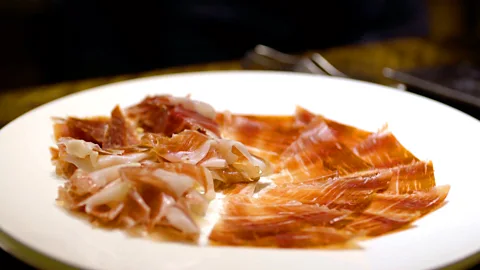 Max Duncan
Max DuncanA tiny organic farm in south-western Spain produces unconventional ham that sells for €4,100 (£3,600) a leg, and is recognised by Guinness World Records as the world’s most expensive.
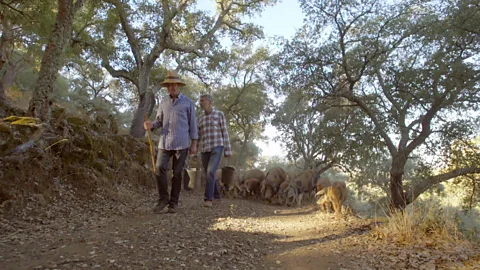 Max Duncan
Max DuncanJamón – the Spanish word for ham – has been consumed on the pork-loving Iberian Peninsula for at least 2,000 years. The Roman poet Martial wrote about dining on it in the 1st Century AD in what is now Spain. Since then, in many rural areas of the country, the slaughter of a pig has long been cause for celebration, and the hind legs would often be salted and dried for later consumption as jamón.
To this day, jamón is an essential part of the nation’s food culture. From quiet villages to bustling cities, it is spread out on plates to kick off long family meals, picked at by friends in bars and stuffed into late-morning sandwiches. The Spanish consume some 160,000 tonnes of it a year, and as the rest of the world catches on, exports of it are rising.
 Max Duncan
Max DuncanOf all the ham produced in Spain, jamón ibérico (made from the black Iberian breed of pigs) is often the most prized, on of its distinctive flavour. It is officially recognised in various ‘denomenacións de origen’, geographical indicators similar to the appellation d'origine contrôlée used in for wine and other products. One such region with its own denominación de origen is Jabugo, the area around a small town of the same name in Andalucía, which is famously devoted to producing the ham.
Jamón ibérico de bellota (jamón from pigs fed on bellota, or acorns) tends to be the most gourmet version and is produced across the various regions, including Jabugo. Rather than being produced from animals raised purely on feed, to be recognised as ‘de bellota’, the pigs must graze only on fresh pasture and acorns that fall from oak trees for at least 61 days of the year (though the acorn period usually extends longer than two months).
To help consumers navigate this complex set of factors, Spain introduced a colour-coding system in 2014 that categorises jamón according to quality, with a black label being the highest.
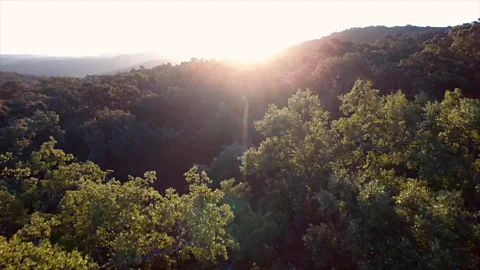 Max Duncan
Max DuncanMany of these acorn-producing oak trees grow on a savannah-like grassland called a dehesa. Found only in central and southern Spain and in various areas of neighbouring Portugal, the dehesa is a unique agrosilvopastoral (agriculture-forestry-grazing) system created and maintained by the interaction between low-density animal grazing, traditional arable farming and forests of mostly holm and cork oaks.
The dehesa has evolved from naturally occurring woodlands that have been altered by the grazing of livestock like pigs, goats and bulls. This grazing prevents shrubs from growing, but preserves the prairie and large oak trees, some of which are used for farming cork. The ecosystem is high in biodiversity, including deer and birds of prey.
Iberian pigs can roam freely on the grasslands and feed on the acorns that carpet the ground in autumn and winter.
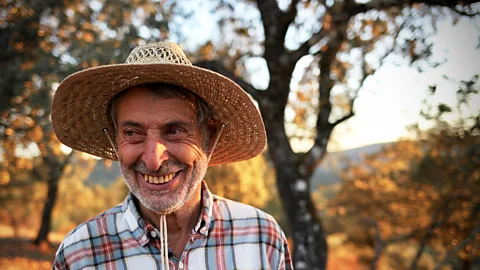 Max Duncan
Max DuncanEduardo Donato used to be a property developer from Catalonia, on the opposite side of the country, but came to the area near Jabugo in 1989 in search of a quiet life in connection with nature. He acquired a plot of land with little plan but to enjoy the peace and quiet and raise horses. But after observing his farming neighbours raise pigs, in 1995 he bought 10 pigs that were a rare spotted variety of the Iberian breed from the local government, which had kept them to help preserve the variety.
Taking advice from the other farmers, he started to breed them and eventually produced his first jamón almost a decade later. Unlike his neighbours, he decided to raise them organically, without antibiotics or hormones to boost growth and using feed produced without chemicals. This was almost unheard of at the time, but he persisted and still continues to farm this way at his company, Dehesa Maladúa. Donato says the organic process, the rare breed and unique environment justify the jaw-dropping price of €4,100 (£3,600) a leg, which makes his jamón the world’s most expensive according to Guinness World Records.
 Max Duncan
Max DuncanDonato’s farm is located in the Sierra de Aracena and Picos de Aroche Natural Park, part of a Unesco-protected biosphere reserve. This well-preserved and maintained dehesa ecosystem contains giant cork oak trees that are hundreds of years old.
It would be impossible for farmers like Donato to recreate the conditions of the dehesa elsewhere because it takes so long to grow trees big enough to produce the quantity of acorns needed to feed the pigs. He and his pigs therefore have no choice but to live in harmony with this fragile environment on which they rely, but to which they also contribute
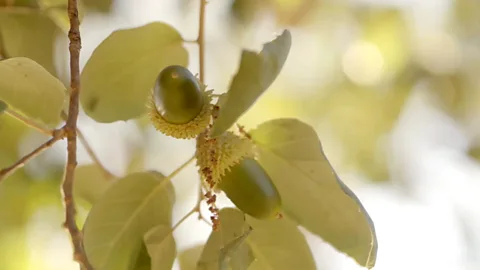 Max Duncan
Max DuncanThe fallen acorns that carpet the dehesa give the meat its complex flavour and aroma for which jamón ibérico de bellota is famous. Acorns are high in oleic acid, a fatty acid also found in olives, that is believed to be good for health, according to the US’ National Center for Biotechnology Information (NCBI).
The different species of oak tree found in the forest produce acorns at different times, so the pigs have a constant supply from mid-autumn until early spring. For the rest of the year, the pigs feed on grass, olives, nuts, berries and roots that they come across in the dehesa, as well as organic cereals and legumes, which Donato feeds them.
 Max Duncan
Max DuncanPigs of the Iberian breed are typically black. But the 200 or so pigs at Dehesa Maladúa are a reddish brown with dark spots. This extremely rare variety of the Iberian breed is called ‘Manchado de Jabugo’ – ‘spotted Jabugo’ in English – which was pushed to near extinction due to a preference for black varieties, which were more easily accepted by consumers and easier to breed and raise.
According to Donato, pigs from the Manchado de Jabugo variety, when raised organically, need three years to reach the ideal slaughter weight of around 170kg – more than twice as long as most Iberian pigs raised using regular, non-organic methods.
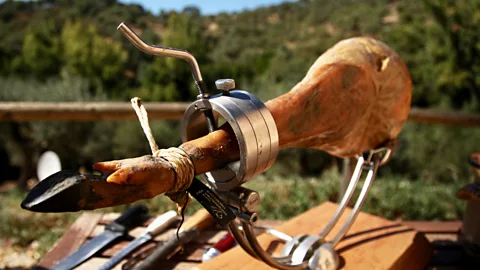 Max Duncan
Max DuncanPigs that have reached their ideal weight are slaughtered at the end of winter after spending three to four months eating nothing but acorns, grass and other plants. Much of the meat is used for regular cuts and sausages, while the hind legs are cured to make jamón.
While good jamón is traditionally cured for at least three years, Donato spends up to seven drying his in a local, family-run cellar. The legs are first buried in salt for around a week before being washed and hung in a temperature-controlled room where they stay for three months. From there, they are hung for up to a year and a half in an airy room at the top of the storehouse, where the windows are left open to allow the mountain breezes in. After that, the legs are moved to the basement, where they spend another four to five years curing. Eventually they are cleaned up, boxed and ready to be sold.
For years, connoisseurs of fine jamón ibérico would only eat meat from the legs of black Iberian pigs. In 2016, however, Donato’s reddish-brown jamón won a ‘best new product’ award at Biofach, the world’s leading organic food trade fair held each year in . For him, the award was something of a vindication.
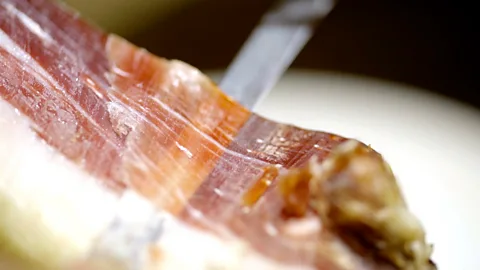 Max Duncan
Max DuncanJamón carving is an art in its own right, and professional carvers are often employed by high-end restaurants and at special events. The meat should be sliced incredibly thin and, if possible, be served immediately, at room temperature, to ensure that the flavour is fresh and the fat is soft enough to melt in the mouth.
Cuts from different parts of a good leg have distinct flavours and textures that can be appreciated in a tasting session, much like those for wine. Fattier cuts from near the hip have a rich, buttery taste, while drier cuts found closer to the hoof have a sweet, nutty flavour. And just like wine, a good jamón reflects the quality of the environment from where it came.
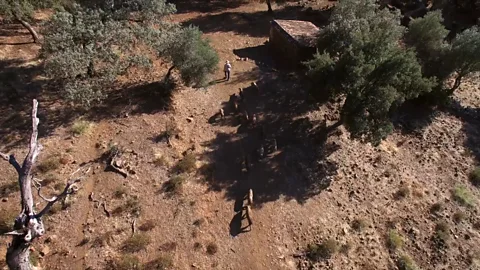 Max Duncan
Max DuncanWe make money to live; we don’t live to make money,” Donato said.
 Max Duncan
Max DuncanAnd that’s why Donato has no plans to expand. A bigger herd could put strain on the dehesa, potentially disrupting a delicate balance and affecting the quality of both the environment and the product. Much of the value of his jamón also lies in its rarity, so it also makes sense to keep it in short supply.
Plus, now 70 years old, he prefers the quiet life. After all, that’s what drew him here in the first place.
The World’s Rarest is a BBC Travel series that introduces you to unparalleled treasures found in striking places all across the world.
